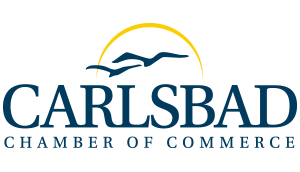The National Collegiate Athletic Association (NCAA) announced this summer that California State University San Marcos (CSUSM) has been approved for NCAA Division II candidacy.
Founded in 1910, the NCAA is the governing body for more than 1,200 schools with more than 400,000 student-athletes. In 1973, the membership divided into three divisions: I, II and III. Currently, 300 schools compete in NCAA Division II, not including those institutions that are in the candidacy process.
The Cougar athletics program, which fields 14 intercollegiate sport teams (men's and women's soccer, men's and women's cross country, women's volleyball, men's and women's basketball, men's and women's golf, men's and women's track & field, women's indoor track & field, softball and baseball) has had staunch support from the California Collegiate Athletic Association (CCAA) during the application process.
After representatives from various CCAA schools made a site visit to CSUSM's campus in May, the CCAA advisory council voted 12-0 to recommend that CSUSM be admitted to the conference upon admission to the NCAA.
The CCAA currently includes 12 public universities from across California. Eleven of the 12 institutions in the CCAA are in the California State University (CSU) system; the only non-CSU school is the University of California, San Diego.
NCAA Transition Timeline: A Three-Year Transition Process
With the successful application for NCAA Division II membership, CSUSM will now enter a minimum three-year transition period before earning full NCAA status.
The Membership Committee annually determines if an institution should be moved forward into the next candidacy year, and it can require an institution to repeat a year if progress is not sufficient.
During year one, 2014-2015, the Cougars will remain in the National Association of Intercollegiate Athletics (NAIA) and the Association of Independent Institutions (A.I.I.). During this time, the department will work towards meeting NCAA first-year requirements.
During year two, 2015-2016, CSUSM athletic schedules will begin to include CCAA members, but the Cougars will not be eligible for postseason competition.
During year three, 2016-2017, CSUSM will be granted provisional membership into NCAA Division II and continue to play a CCAA conference schedule, but will not be eligible to compete in NCAA DII postseason competition.
CSUSM will gain full NCAA Division II member status in the fall of 2017 and become eligible to compete in NCAA Division II postseason competition during the 2017-2018 academic year as long as all benchmarks are met during the transition process.
dr.
"The coaches are very excited not only about joining the NCAA but also the CCAA," said Head Cross Country and Track & Field Coach Steve Scott. "We will be able to establish rivalries with schools like UC San Diego and Cal Poly Pomona, which will create a lot of excitement amongst our community and student body. It has been an unbelievable transformation from where we started from to where we are now."
Founded in 1910, the NCAA is the governing body for more than 1,200 schools with more than 400,000 student-athletes. In 1973, the membership divided into three divisions: I, II and III. Currently, 300 schools compete in NCAA Division II, not including those institutions that are in the candidacy process.
The Cougar athletics program, which fields 14 intercollegiate sport teams (men's and women's soccer, men's and women's cross country, women's volleyball, men's and women's basketball, men's and women's golf, men's and women's track & field, women's indoor track & field, softball and baseball) has had staunch support from the California Collegiate Athletic Association (CCAA) during the application process.
After representatives from various CCAA schools made a site visit to CSUSM's campus in May, the CCAA advisory council voted 12-0 to recommend that CSUSM be admitted to the conference upon admission to the NCAA.
The CCAA currently includes 12 public universities from across California. Eleven of the 12 institutions in the CCAA are in the California State University (CSU) system; the only non-CSU school is the University of California, San Diego.
NCAA Transition Timeline: A Three-Year Transition Process
With the successful application for NCAA Division II membership, CSUSM will now enter a minimum three-year transition period before earning full NCAA status.
The Membership Committee annually determines if an institution should be moved forward into the next candidacy year, and it can require an institution to repeat a year if progress is not sufficient.
During year one, 2014-2015, the Cougars will remain in the National Association of Intercollegiate Athletics (NAIA) and the Association of Independent Institutions (A.I.I.). During this time, the department will work towards meeting NCAA first-year requirements.
During year two, 2015-2016, CSUSM athletic schedules will begin to include CCAA members, but the Cougars will not be eligible for postseason competition.
During year three, 2016-2017, CSUSM will be granted provisional membership into NCAA Division II and continue to play a CCAA conference schedule, but will not be eligible to compete in NCAA DII postseason competition.
CSUSM will gain full NCAA Division II member status in the fall of 2017 and become eligible to compete in NCAA Division II postseason competition during the 2017-2018 academic year as long as all benchmarks are met during the transition process.
dr.
"The coaches are very excited not only about joining the NCAA but also the CCAA," said Head Cross Country and Track & Field Coach Steve Scott. "We will be able to establish rivalries with schools like UC San Diego and Cal Poly Pomona, which will create a lot of excitement amongst our community and student body. It has been an unbelievable transformation from where we started from to where we are now."
